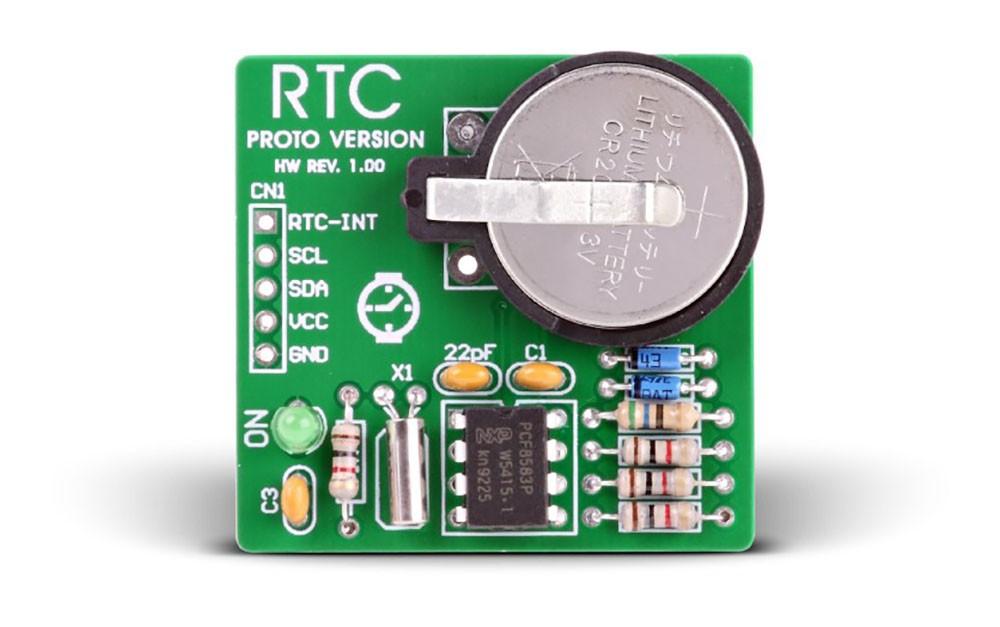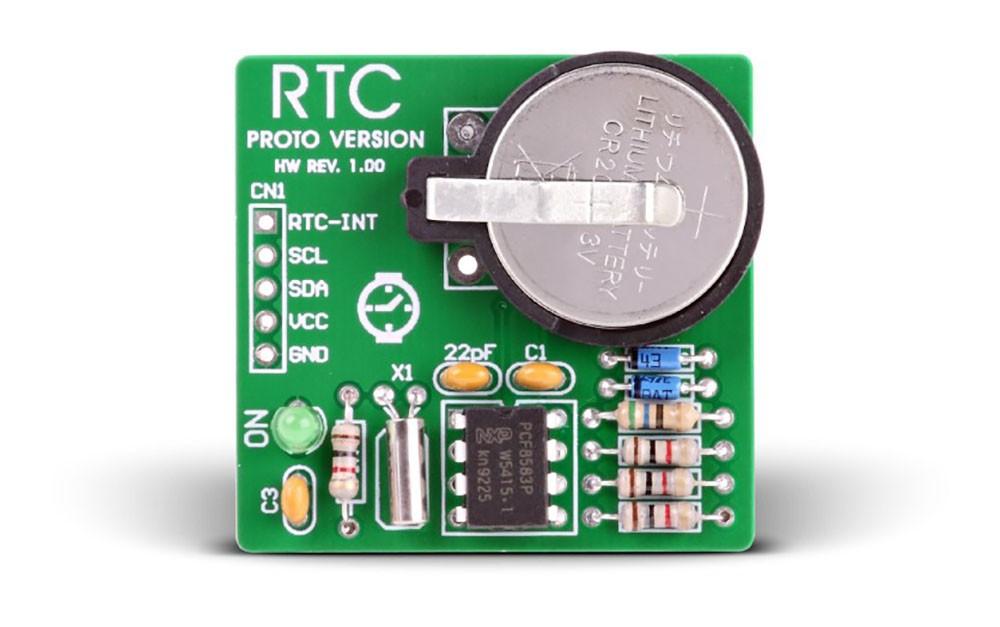
Overview
Add real-time clock and calendar functionality to the design using the RTC PROTO Board. This accessory board employs a PCF8583 real-time clock and calendar chip that allows user to keep record of the current time even when the microcontroller is turned off. It features an alarm function and can be used to generate an interrupt as well. The real-time clock is driven by a coin-cell battery which is included.
This board allows easy and quick access to the real time and date along with corrections for leap year. RTC PROTO Board allows easy connection to standard prototyping boards using five pin pads that have a standard 0.1
Downloads
Ajoutez une horloge en temps réel et une fonctionnalité de calendrier à la conception à l'aide de la carte RTC PROTO . Cette carte accessoire utilise une puce d'horloge et de calendrier en temps réel PCF8583 qui permet à l'utilisateur de conserver un enregistrement de l'heure actuelle même lorsque le microcontrôleur est éteint. Il dispose d'une fonction d'alarme et peut également être utilisé pour générer une interruption. L'horloge en temps réel est alimentée par une pile bouton incluse.
Cette carte permet un accès facile et rapide à l'heure et à la date réelles ainsi qu'aux corrections pour les années bissextiles. La carte RTC PROTO permet une connexion facile aux cartes de prototypage standard à l'aide de cinq pavés à broches ayant un écart standard de 0,1
| General Information | |
|---|---|
Part Number (SKU) |
MIKROE-331
|
Manufacturer |
|
| Physical and Mechanical | |
Weight |
0.1 kg
|
| Other | |
Warranty |
|
HS Code Customs Tariff code
|
|
EAN |
8606015072050
|
Frequently Asked Questions
Have a Question?
Be the first to ask a question about this.

